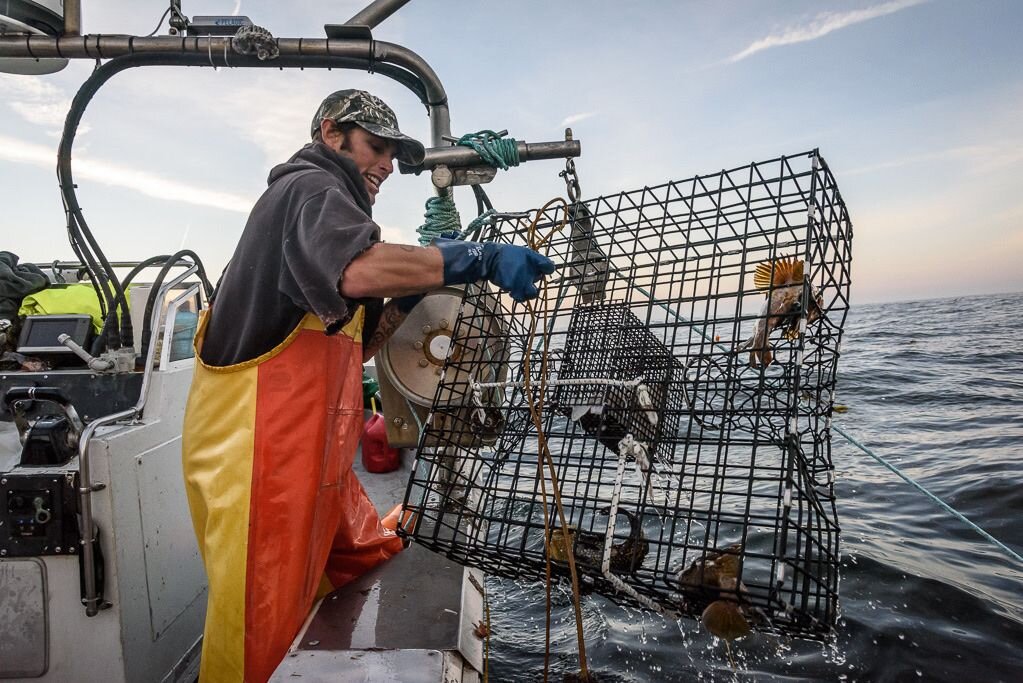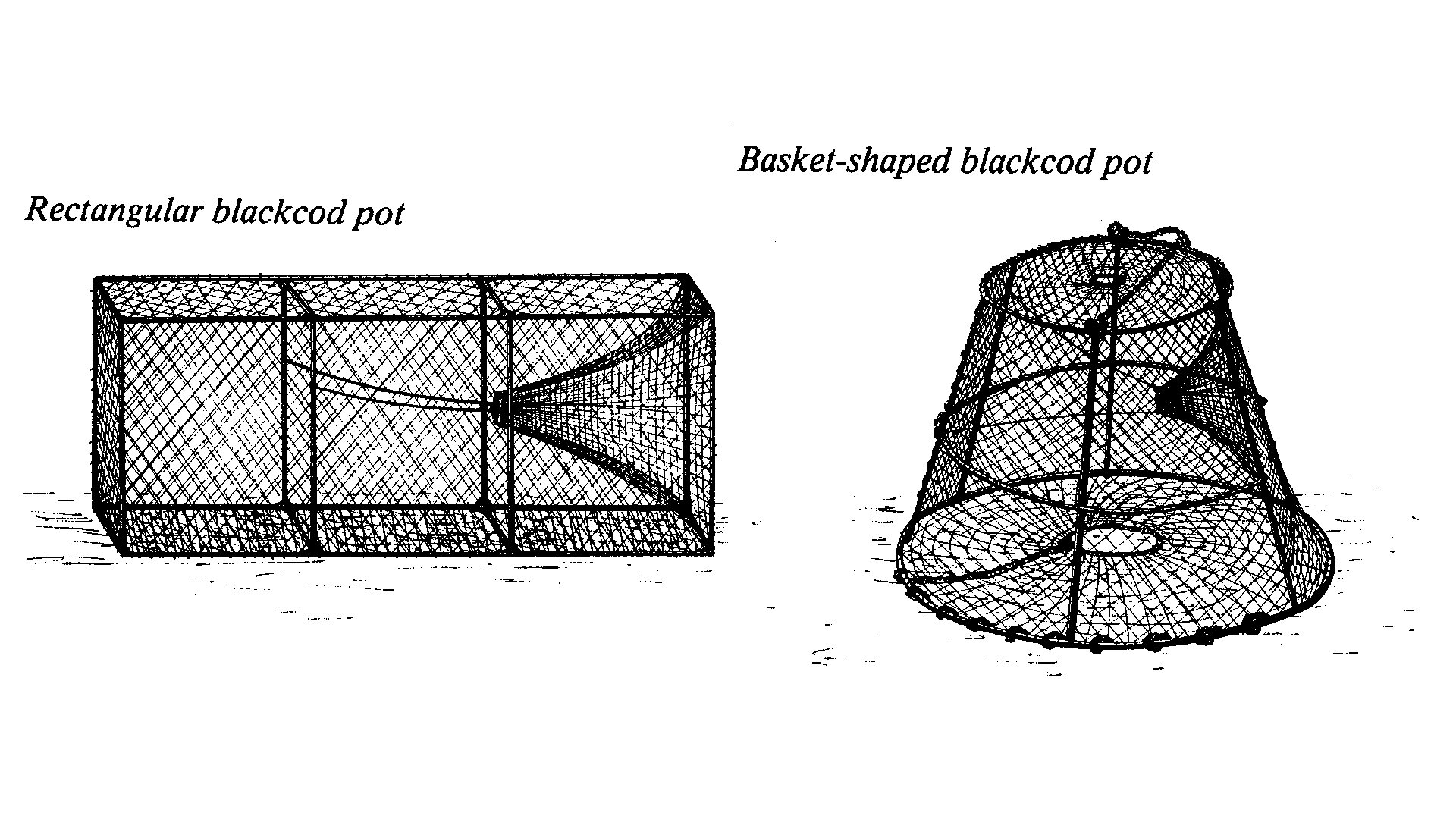Fishing Gear Types 101: Traps and Pots
Photo by David Hills of @FishyPictures
Traps and pots
Dungeness crab, rock crab, sablefish, spot prawns, nearshore rockfish, and hagfish (aka slime eels)
Contrary to popular belief, fishermen harvest much more than crab using pots and traps. While heavy Dungeness crab pots are the trap gear known most to those outside of the commercial fishing industry, plenty of fish are brought aboard with this gear type.
Pots and traps come in various shapes and sizes depending on the species and are set using a few different methods. Dungeness crab and rock crab fisheries have a single line with buoys on one end and a pot on the other. Spot prawn, sablefish, and rockfish traps can be set similarly to crab pots, but can also be set on a longline, with multiple traps on a single line. Hagfish gear, large barrels with holes drilled into the side, are almost always set on a longline.
Dungeness crab pots resemble three foot in diameter wire-mesh hockey pucks with two iron weight bars welded to the bottom circular iron frame. The pots can weigh up to 150 pounds — giving deckhands who handle them quite the workout.
Illustration courtesy of California Sea Grant.
Fishermen catch rock crab in baited rectangular cages of wire mesh or collapsable plastic, which are much lighter than Dungeness crab pots. Spot prawn and nearshore rockfish traps are similar to those used for rock crabs but have tunnels leading into the trap designed specifically for the target species.
Sablefish traps come in both rectangular and conical shapes that can weigh up to 100 pounds. Fishermen sometimes set them individually, but since sablefish live in deep water, with average depths of more than 1,000 feet, it is more efficient to longline sablefish traps, with multiple pots on a single line.
Illustration courtesy of California Sea Grant.



